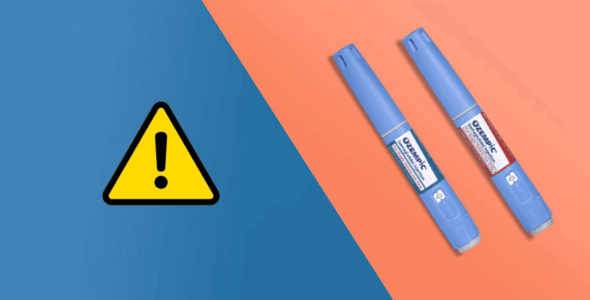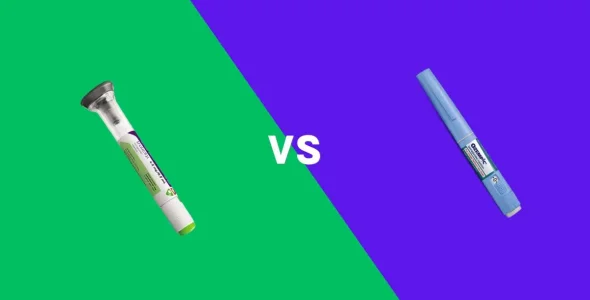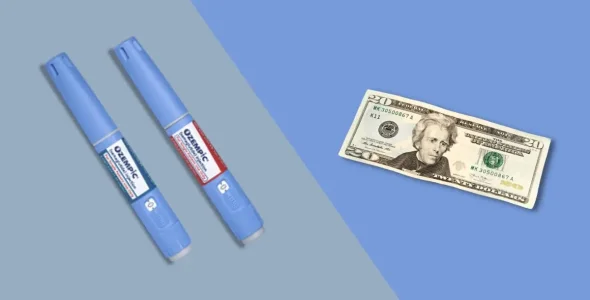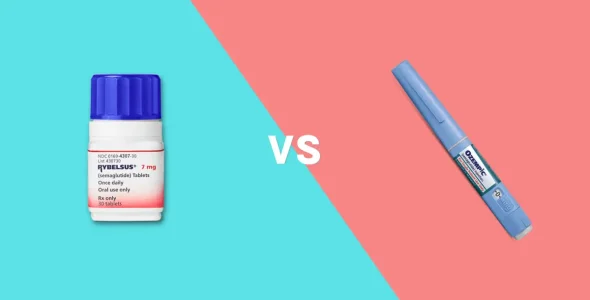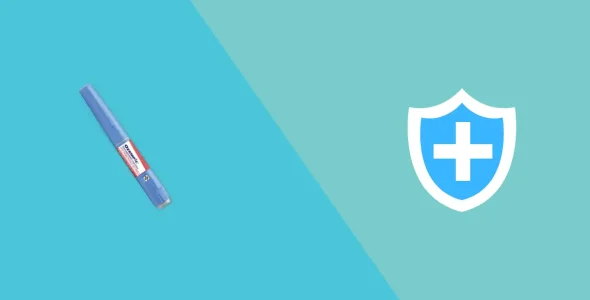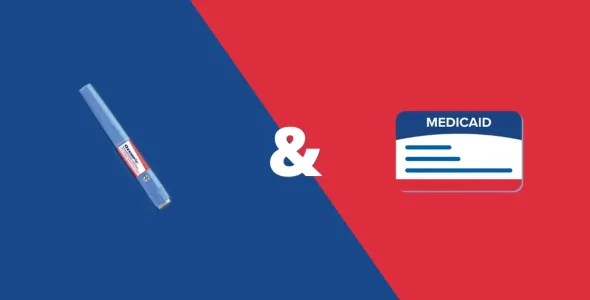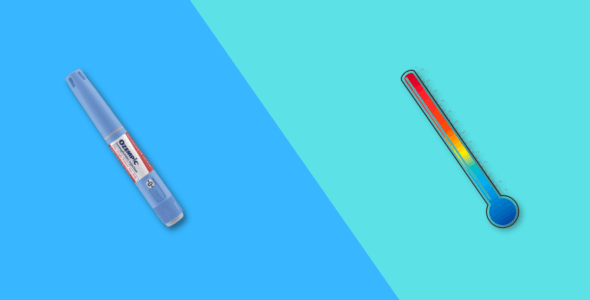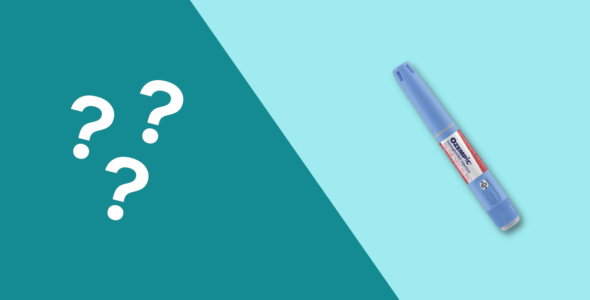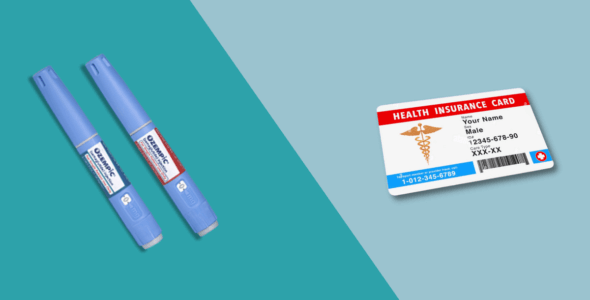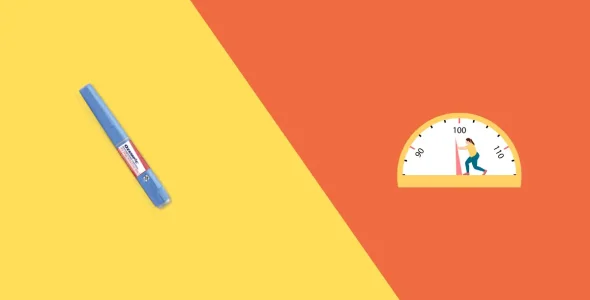What is Ozempic Uses, warnings & interactions
Ozempic is a medication used along with diet and exercise in adults to treat type 2 diabetes. Ozempic is a glucagon-like peptide 1 (GLP-1) receptor agonist that helps lower your blood sugar levels. The active ingredient in Ozempic is semaglutide which stimulates insulin secretion and lowers glucagon secretion, depending on your blood glucose level.
Ozempic overview
- Ozempic
- Treatment of type 2 diabetes
- Semaglutide
- Subcutaneous injection
- Injectable
- Antidiabetic
What is Ozempic used for?
Ozempic (semaglutide) is a prescription drug that is manufactured by Novo Nordisk. There is no generic version of Ozempic available.
It is approved by the US Food and Drug Administration (FDA) to:
- Lower blood sugar in addition to diet and exercise in patients with type 2 diabetes. It has not been studied in patients with pancreatitis and it is not indicated for use in type 1 diabetes mellitus or diabetic ketoacidosis.
- To reduce the risk of major adverse cardiovascular events (heart attack and stroke) in adults with type 2 diabetes mellitus and established heart disease.
How does Ozempic work?
Ozempic is a glucagon-like peptide 1 (GLP-1) receptor agonist. Glucagon-like peptide-1 (GLP-1) is a hormone that has multiple actions on glucose which is controlled by the GLP-1 receptors. By binding and activating these receptors, Ozempic lowers blood glucose by stimulating insulin secretion and reducing glucagon secretion. These are both done in a glucose-dependent manner. This means when your blood glucose is high, your body will release more insulin and less glucagon. Ozempic also slightly delays the time it takes your food to empty out of your stomach immediately after eating. This can help reduce the rate at which glucose circulates in your bloodstream.
What are the most commonly prescribed doses of Ozempic?
- 2mg/1.5ml Pre-filled pen (delivers doses of 0.25 mg or 0.5 mg per injection)
- 4mg/3ml Pre-filled pen (delivers 1mg per injection)
- 8mg/3ml Pre-filled pen (delivers 2mg per injection)
How to take Ozempic
- Read the Instructions for Use that come with the pen.
- Use Ozempic exactly as your healthcare provider prescribes it. Do not take more than the amount prescribed.
- Your healthcare provider should show you how to use Ozempic before you use it for the first time.
- Ozempic is injected under the skin (subcutaneously) of your stomach, thigh, or upper arm. Do not inject it into a muscle or vein.
- Use Ozempic at any time of the day on the same day each week. You may change the day of the week you take this medication as long as your last dose was given 2 or more days before.
- If you miss a dose of Ozempic, take the missed dose as soon as possible if it’s within 5 days of the missed dose. If more than 5 days have passed, skip the missed dose and take your next dose on the regularly scheduled day.
- You can take Ozempic with or without food.
- Don’t mix insulin and Ozempic in the same injection. You may inject them both in the same area but not right next to each other.
- Rotate injection sites with each injection.
- Stay on your diet and exercise program while on Ozempic.
- Discuss with your healthcare professional about how to prevent, recognize and manage low blood sugar (hypoglycemia), and high blood sugar (hyperglycemia).
- Do not share your Ozempic pen with other people to reduce your risk of infection.
- Store this medication in the refrigerator (36°F to 46°F) before its first use. After its first use, you can store it at a controlled room temperature (59°F to 86°F) or refrigerated (36°F to 46°F) for 56 days. Keep the pen cap on when not in use. Ozempic should be stored away from heat, direct sunlight, and moisture.
- The medication is supplied with a Medication Guide from the manufacturer.
Ozempic contraindications
Ozempic is contraindicated in patients with:
- A personal or family history of medullary thyroid carcinoma (MTC) or in patients with multiple endocrine neoplasia syndrome type 2 (MEN 2).
- Known hypersensitivity (allergic reaction) to semaglutide or any of the inactive ingredients.
Ozempic warnings
- Ozempic may cause thyroid tumors or a type of thyroid cancer called medullary thyroid carcinoma (MTC).
- Acute and chronic pancreatitis (inflammation of the pancreas) have been reported in clinical studies. Report any symptoms of pancreatitis, including persistent severe stomach pain which sometimes radiates to the back, and vomiting.
- An increased risk of diabetic retinopathy complications. If you have a history of diabetic retinopathy, you should be monitored for the progression of this condition.
- You should never share your Ozempic pen, even if the needle has been changed. Pen-sharing increases your risk of spreading blood-borne infections.
- Your risk of hypoglycemia is increased if Ozempic is used in combination with an insulin secretagogue (sulfonylurea) or insulin. You may require a lower dose of the secretagogue or insulin to reduce this risk.
- There have been postmarketing reports of acute kidney injury and worsening of chronic renal failure, which may sometimes require hemodialysis.
- Serious hypersensitivity reactions (anaphylaxis, angioedema) have been reported with Ozempic. If this reaction occurs, discontinue using Ozempic, treat immediately, and monitor until your signs and symptoms resolve.
- Tell your doctor if you are pregnant or breastfeeding. Ozempic shouldn’t be used during pregnancy and for at least two months before a planned pregnancy because it is not known if it may affect your unborn child.
Ozempic drug interactions
When Ozempic is taken with other medications, they may interact and change how those medications work. They may also make some side effects more likely and severe.
Some medications that interact with Ozempic include:
- All types of insulin
- Chlorpropamide
- Glyburide
- Glimepiride
- Metformin
- Nateglinide
- Repaglinide
- Somapacitan
- Tolazamide
- Tolbutamide
Side effects of Ozempic
The most common side effects of Ozempic include:
- Nausea
- Vomiting
- Diarrhea
- Abdominal pain
- Constipation
- Weight loss
Some serious side effects include:
- Increased risk of thyroid tumors
- Pancreatitis
- Diabetic retinopathy complications
- Hypoglycemia when used with insulin secretagogues or insulin
- Acute kidney injury
- Gallbladder disease
- Allergic reactions
Ozempic alternatives
Learn more about Ozempic versus other type 2 diabetes medications which vary by different factors such as side effects and costs. The following FDA-approved alternatives to Ozempic are available:
- Trulicity (dulaglutide) is a GLP-1 receptor agonist used to treat type 2 diabetes.
- Victoza (liraglutide) is a GLP-1 receptor agonist used to treat type 2 diabetes. It can also be used to help lower blood sugar levels in children ages 10 years and older with type 2 diabetes.
Is Ozempic better than Victoza?
Ozempic (semaglutide) or Victoza (liraglutide) are both possible treatment options if you have type 2 diabetes. They both belong to the same drug class, glucagon-like peptide-1 (GLP-1) agonists. They also are both given via an injection under the skin. Ozempic is given as a weekly injection while Victoza is injected once a day.
They are both used to help manage blood sugar levels in adults with type 2 diabetes and lower the risk of cardiovascular events in people with type 2 diabetes and heart disease. Victoza can also be used to manage blood sugar levels in children 10 years and older with type 2 diabetes.
One study showed that Ozempic was better at reducing hemoglobin A1C and body weight than Victoza. This study also found that Ozempic caused more side effects and people were more likely to stop using it because of these side effects.
Ozempic FAQs
How long does Ozempic last?
The maximum concentration is reached within one to three days after injection.
How long does Ozempic stay in the system?
With an elimination half-life of approximately 1 week, Ozempic will be in your bloodstream for about 5 weeks after the last dose.
Does Ozempic cause withdrawal?
Do not stop using Ozempic without talking to your doctor. If you stop using it, your blood sugar levels may increase.
How do I store Ozempic?
Ozempic should be stored in the refrigerator (36°F to 46°F) before its first use. After its first use, you can store it at a controlled room temperature (59°F to 86°F) or refrigerated (36°F to 46°F) for 56 days. Keep the pen cap on when not in use. Ozempic should be stored away from heat, direct sunlight, and moisture.
How long does it take for Ozempic to kick in and start working?
Your blood glucose levels should start to decline within the first week after you start using Ozempic at your regular maintenance dose. Its full effects can take 8 weeks or longer after starting this medication.
What is the difference between Ozempic and Wegovy?
While they are both the same generic semaglutide, Ozempic is used to treat type 2 diabetes and Wegovy is used with diet and exercise for chronic weight management in overweight adults who also have at least one weight-related medical condition such as type 2 diabetes, high blood pressure, or high cholesterol.

